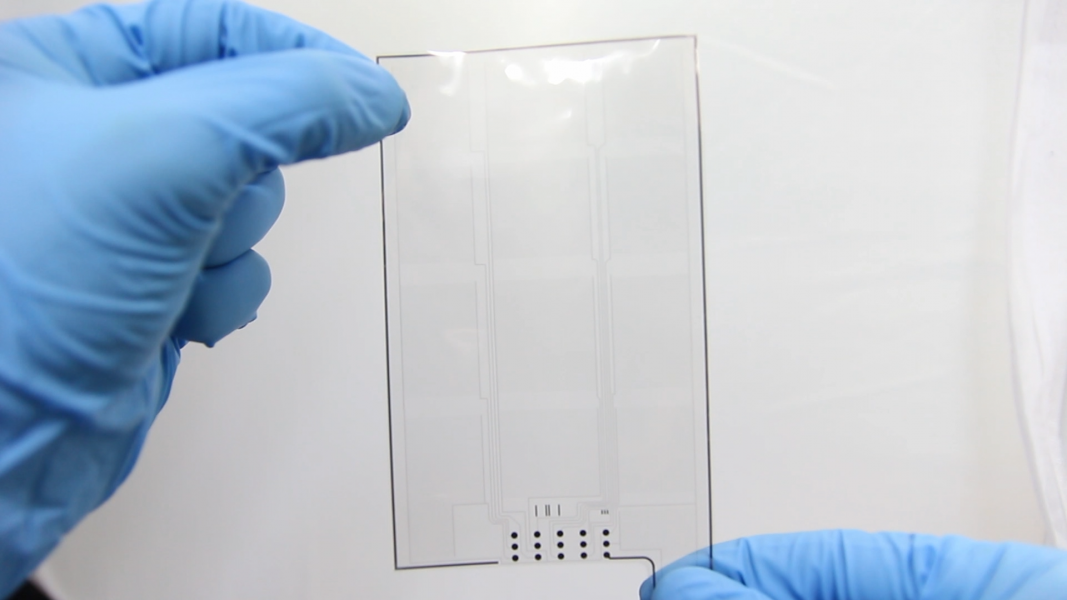Touchscreens have become a universal feature in portable electronic devices. But making touch sensors flexible and pressure-sensitive has proved to be challenging.
In a paper in Advanced Functional Materials, Prof. Jun-Bo Yoon and co-workers from the Korea Advanced Institute of Science and Technology (KAIST) report a bending-insensitive, transparent nanoforce touch sensor that can be mass-produced.
Jae-Young Yoo: “Previous force touch sensors have a limitation to be applied to dynamically flexible applications because the sensing performance is degraded by the induced mechanical stresses of the bent device. However, by developing a transparent hierarchical nanocomposite film and considering the mechanical neutral plane, our force touch sensor has high sensitivity and transparency without performance degradation in bending situations.”
The antireflective nanograting structure results in a highly transparent device. The composite of a soft grating and a hard insulator concentrates pressure-related stress to the gratings. The silver nanoparticles are concentrated by pressure, resulting in a sensitivity increase compared to a flat design.
Dr. Min-Ho Seo: “By applying the proposed sensor to the wearable application we can measure human signals such as arterial pulse waves. Moreover, we can adapt our 7-inch nanoforce touch sensor into a commercial smartphone application, to simply recognize the pressure of human finger as well as the position. Since the developed sensor device does not only have high sensing performances and mechanical stability, but it also has manufacturing advantages, we expect it to have a major impact on the flexible sensor industry and research in this area.”
To learn more about this transparent, flexible force touch sensor, please visit the Advanced Functional Materials homepage.

















